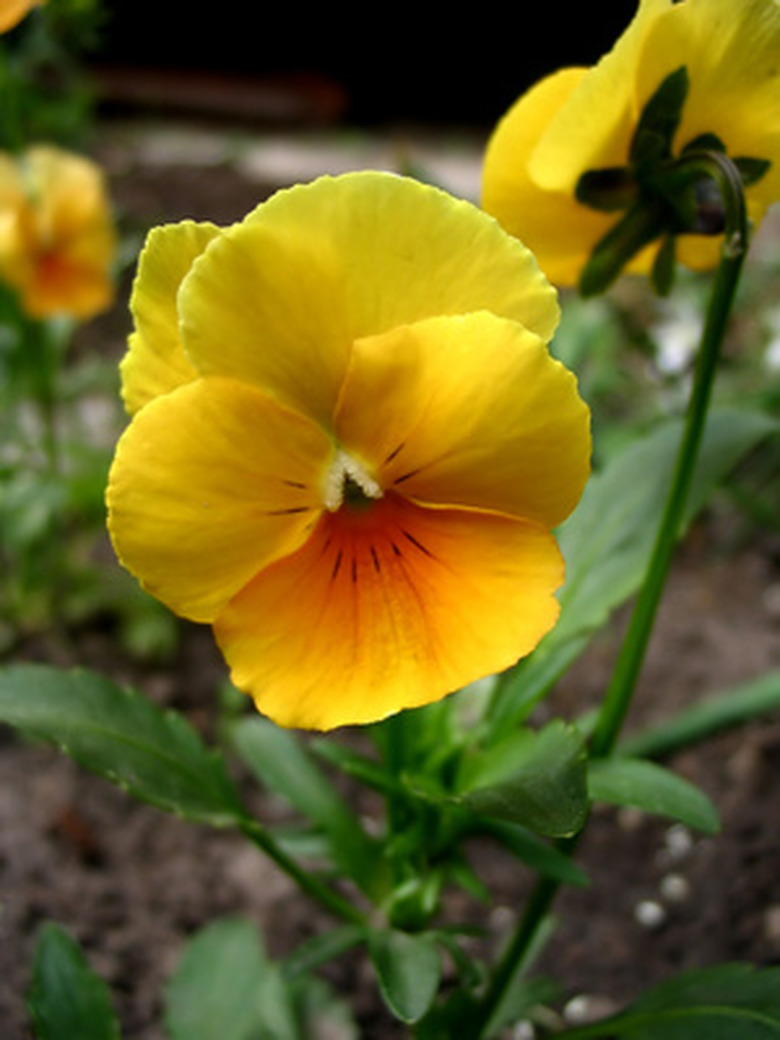What Flowers Are In Bloom In November?
When the temperatures begin to drop and the leaves begin to fall, November-blooming flowers emerge to light up the garden with color and texture. Grown in a wide range of shapes and sizes, blooms colors and textures, November flowers provide warmth and color to the landscape, even during the cool climate. Nestled along a garden border or tucked into flower containers, November flowers create a commanding landscape presence.
Stonecrop
Stonecrop
Stonecrop (Sedum), also called Autumn Joy, is a succulent, clumping perennial that grows best in USDA zones 3 to 11. It grows between 1 and 3 feet tall and wide and has a moderate growth rate. The 3- to 6-inch-wide flattened flowerhead is made up of small, star-like flowers that are deep rose to red and attract butterflies to the garden. The fleshy, gray to green foliage and succulent leaves grow in an upright, spreading clump. Stonecrop grows best in full sun to part shade and well-drained soil with a medium amount of moisture. Stonecrop is both drought- and heat-tolerant.
- When the temperatures begin to drop and the leaves begin to fall, November-blooming flowers emerge to light up the garden with color and texture.
- The 3- to 6-inch-wide flattened flowerhead is made up of small, star-like flowers that are deep rose to red and attract butterflies to the garden.
Pansy
Pansy
Pansies (Viola) are part of a large genus of flowers that include perennials, annuals and biennial flowers that grow in USDA zones 3 to 9. Blooming in November, pansies reach a maximum height of 12 inches and a spread of 6 feet wide. Known for their bright and cheerful "faces", the five-petaled flowerheads are comprised of one lower petal and two upper and lateral petals. Pansies grow in a rainbow of bright colors including, yellow, purple, white, blue and burgundy, with some bi-colored pansies that have more than one color swirled together. They are also frost-tolerant and will bloom into winter to help add color to the garden. They grow best in full sun to part shade and well-drained, humus-rich soil. To keep pansy flowers blooming throughout the season, deadhead the spent blooms as soon as they are visible.
- Pansies (Viola) are part of a large genus of flowers that include perennials, annuals and biennial flowers that grow in USDA zones 3 to 9.
- To keep pansy flowers blooming throughout the season, deadhead the spent blooms as soon as they are visible.
Tatarian Aster
Tatarian Aster
Tatarian aster (Aster tataricus) is a perennial flower that grows best in USDA zones 3 to 9. It has a spreading growth habit and reaches a maximum height of 10 feet tall and a spread of 1 to 3 feet wide. Tatarian asters have 1-inch-wide, daisy-like, clusters of pale purple flowers that attract butterflies to the garden. Blooming in November, the masses of flowers are also frost-tolerant to withstand cold temperatures. Tatarian asters grow best in full sun to part shade and well-drained soil. They are adaptable to both wet clay and dry sand, making for a versatile perennial variety.
